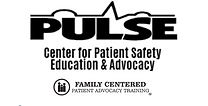TakeCHARGE Campaign Moves to Step 3: Prepare for Doctor or Hospital Visits — Make a List of Questions
- dhalperin1
- Jun 2
- 2 min read
Updated: Aug 2
#3 of public awareness campaign’s “5 Steps to Safer Health Care” aims to prevent “doorknob moments”
The TakeCHARGE Campaign: 5 Steps to Safer Health Care is pleased to announce that June is the month for people to take its Step 3: Prepare for Doctor or Hospital Visits — Make a List of Questions.
TakeCHARGE was started by Pulse Center for Patient Safety Education & Advocacy just before the COVID pandemic struck. Pulse’s president, board-certified patient advocate Ilene Corina, says, “When we visit a doctor or hospital, we are often worried and stressed — in other words, not thinking as clearly as we’d like. We may be getting bad news, or having to make critical decisions about treatments. Often, we forget what we meant to say, leading to the well-known ‘doorknob moment’, when as the clinician has a hand on the doorknob to leave the room, a patient suddenly remembers a question they’d meant to ask, or a detail they’d forgotten to mention.”

The remedy, says Corina, is simple: if people think about their reason for the clinical visit ahead of time, writing down questions as they occur, they will have their thoughts organized when they are face-to-face with a doctor. Talking it over with family and friends may suggest other questions never previously considered. And an advocate or friend who goes to the appointment with you may also think of new questions.
For more suggestions about TakeCHARGE’s Step 3, please visit https://takecharge.care/step-3/. Also look for TakeCHARGE messages on Facebook, Instagram and LinkedIn.
To learn more about the TakeCHARGE Campaign and how to get involved, please visit https://takecharge.care/get-involved/.
For further information:
or patientsafetynews@gmail.com #takechargecampaign #Step3 #5StepsToSaferHealthcare #pulsecpsea #pulsecenterforpatientsafety #makealistofquestionsfordoctor




Comments